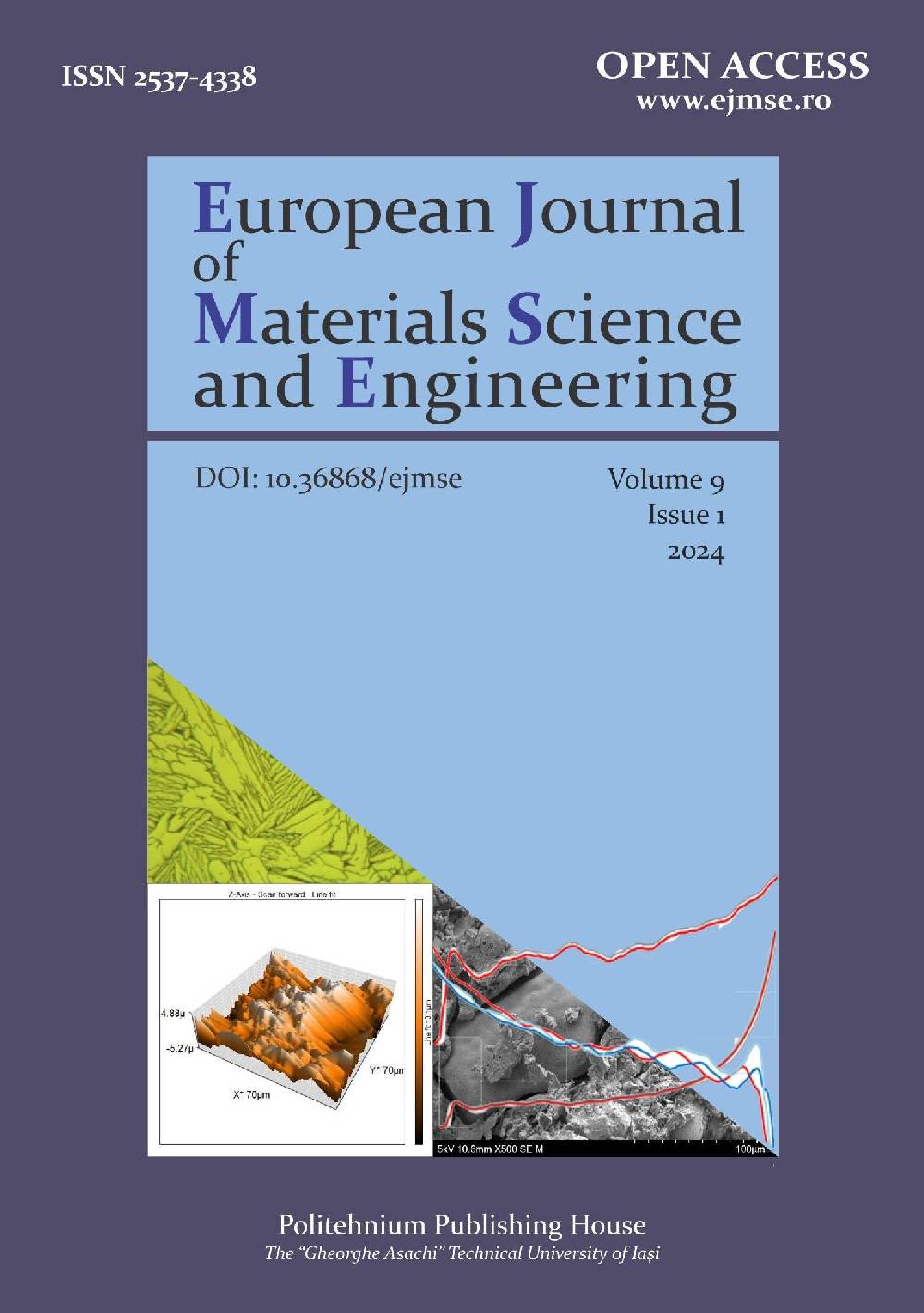A NEW APPROACH TO CONTROL DIABETES BY CONVERTING EXCESS BLOOD SUGAR TO ENERGY OVER ELECTROCATALYTIC METALLIC ANODE
European Journal of Materials Science and Engineering, Volume 9, Issue 1, 2024
PDF Full Article, DOI: 10.36868/ejmse.2024.09.01.003, pp. 3-18
Published: March 20, 2024
Subir PAUL1, Arnab DUTTA1,*
1 Department of Metallurgical and Material Engineering, Jadavpur University, 188, Raja S.C. Mallick Rd, Kolkata 700032, West Bengal, India
* Corresponding author: mecharnab@gmail.com
Abstract
Diabetes Mellitus, or Diabetes in short, is a group of widespread endocrine diseases characterized by high blood sugar levels. This research paper attempts to find a solution to this high sugar problem, by taking the route of electrochemistry. It was attempted to demonstrate that the excess sugar (glucose) in the bloodstream of a diabetic patient can be lowered by electro-oxidizing the excess sugar in Simulated Body Fluid (SBF) and convert it into electrical energy. For this, a sugar level detection system was developed, using a linear regression model with a coefficient of determination (R2 value) of 0.974. At first, one of the most popular as well as costly electrocatalytic materials i.e., Platinum was used to electro-oxidize the excess sugar. Upon its success, some highly electrocatalytic but cheap electrode materials were developed, such as Nickel, Nickel with nanocarbon, Manganese dioxide (MnO2) and Manganese dioxide with nanocarbon (MnO2C). And they also successfully electro-oxidized the excess glucose in SBF solution, thereby reducing the sugar levels. Thus, a potentially novel route to deal with the epidemic problem of diabetes has been proposed through this research work.
Keywords: Electro-oxidation, Material Characterization, Redox Process, Glucose Detection, Diabetes
References:
- Diabetes Mellitus (DM) – Hormonal and Metabolic Disorders, https://www.msdmanuals.com/home/hormonal-and-metabolic-disorders/diabetes-mellitus-dm-and-disorders-of-blood-sugar-metabolism/diabetes-mellitus-dm, Retrieved 1 October 2022.
- Diabetes, https://www.who.int/health-topics/diabetes#tab=tab_1, Retrieved 29 January 2023.
- E. Kitabchi, G.E. Umpierrez, J.M. Miles, J.N. Fisher, Hyperglycemic crises in adult patients with diabetes, Diabetes Care, 32, 2009, p. 1335, https://doi.org/10.2337/dc09-9032.
- Kharroubi AT, Darwish HM, Diabetes mellitus: The epidemic of the century, World J Diabetes, 6, 2015, pp. 850-867, https://doi.org/ 4239/wjd.v6.i6.850.
- Maheshwari, Karishma, S. Sharma, A. Sharma, S. Verma, Fuel Cell and Its Applications: A Review, International Journal of Engineering Research & Technology, 7, 2018, pp. 6-9.
- Paul, A. Ghosh, Electrochemical Characterization of MnO2 as Electrocatalytic Energy Material for Fuel Cell Electrode, The Journal of Fuel Chemistry and Technology, 43, 2015, pp. 344–351, https://doi.org/10.1016/S1872-5813(15)30008-6.
- Paul and Ruma Chatterjee, Development of Nano Carbon-MnO2 Energy Material for Glucose Fuel Cell Electrode, Nanomaterials and Energy, 3, 2015, pp. 1–9, https://doi.org/10.1680/nme.14.00030.
- Paul and A. Ghosh, MnO2, A High Electrocatalytic Energy Material to Synthesis Energy from Oxidation of Methanol in Fuel Cell, Energy and Environment Focus, 5, 2015, pp. 1–7, https://doi.org/10.1166/eef.2016.1184.
- Guchhait and S. Paul, Synthesis and Characterization of ZnO-Al2O3 Oxides as Energetic Electrocatalytic Material for Glucose Fuel Cell, The Journal of Fuel Chemistry and Technology, 43, 2015, pp. 1004–1010, https://doi.org/10.1016/S1872-5813(15)30029-3.
- Paul, S.K. Naimuddin, A. Ghosh, Electrochemical Characterization of Ni-Co and Ni-Co-Fe for Oxidation of Methyl Alcohol Fuel with High Energetic Catalytic Surface, The Journal of Fuel Chemistry and Technology, 42, 2014, pp. 87–95, https://doi.org/10.1016/S1872-5813(14)60012-8.
- Paul and S.K. Naimuddin, Electrochemical Characterization of Synthesized Ni-Co and Ni-Co-Fe Electrodes for Methanol Fuel Cell, The Journal of Fuel Cell Science and Technology, 11, 2014, pp. 18–25, https://doi.org/10.1016/S1872-5813(14)60012-8.
- Paul, Materials and Electrochemistry: Present and Future Battery, Journal of Electrochemical Science and Technology, 7, 2016, pp. 115-131 https://doi.org/10.5229/JECST.2016.7.2.115.
- Paul, Electrochemical Energy Synthesis and Storage in Battery and Fuel Cell, Amazon Pub, India, 2016, pp. 82–112, ISBN -13: 978-1520321929.
- Paul, AK Mondal, Development of graphene–Ni–NiO energetic catalytic materials for electrochemical energy, Nanomaterials and Energy, 9, 2020, pp. 1-7, https://doi.org/10.1680/jnaen.19.00054.
- Paul, A. Paria, Development of NiO-Nanocarbon and MnO2-Nanocarbon Energetic Catalytic Electrode Materials to Synthesize Electrical Energy through Electrochemical Oxidation of Glucose. Journal of Materials Engineering and Performance,2019 https://doi.org/10.1007/s11665-019-04138-4.
- Yu, B. Vassilyev, O.A. Khazova, N.N. Nikolaeva, Kinetics and mechanism of glucose electrooxidation on different electrode-catalysts: Part I. Adsorption and oxidation on platinum, Journal of Electroanalytical Chemistry and Interfacial Electrochemistry 196, 1985, pp. 105-125, https://doi.org/10.1016/0022-0728(85)85084-1.
- W. Tsai, G. Heckert, L.F. Neves, Y.Q. Tan, D.Y. Kao, R.G. Harrison, D.E. Resasco, D.W. Schmidtke, Adsorption of glucose oxidase onto single-walled carbon nanotubes and its application in layer-by-layer biosensors, Analytical Chemistry, 81, 2009, pp. 7917–7925, https://doi.org/10.1021/ac900650r.
- Q. Tang, X.W. Meng, D. Chen, J.G. Ran, C.Q. Zheng, Glucose biosensor enhanced by nanoparticles, Science China B, 43, 2000, pp. 268–274, https://doi.org/10.1007/BF02969521.
- Degani, A. Heller, Electrical communication between redox centers of glucose oxidase and electrodes via electrostatically and covalently bound redox polymers, Journal of the American Chemical Society, 111, 1989, pp. 2357–2358, https://doi.org/10.1021/ja00188a091.
- Loeb, Sugar decomposition III. Electrolysis of dextrose, Biochemische Zeitschrift, 17, 1909, pp. 132–144.
- Chen, W.D. Zhang, J.S. Ye, Nonenzymatic electrochemical glucose sensor based on MnO2/MWNTs nanocomposite, Electrochemistry Communications, 10, 2008, pp. 1268-1271, https://doi.org/10.1016/j.elecom.2008.06.022.
- Khan, A.A.P. Khan, H.M. Marwani, M.M. Alotaibi, A.M. Asiri, A. Manikandan, S. Siengchin, S.M. Rangappa, Sensitive Non-Enzymatic Glucose Electrochemical Sensor Based on Electrochemically Synthesized PANI/Bimetallic Oxide Composite, Polymers, 14, 2022, p. 3047, https://doi.org/10.3390/polym14153047.
- Phosphate-Buffered Saline or PBS Solution, https://www.thoughtco.com/phosphate-buffered-saline-pbs-solution-4061933, Retrieved Apr 5, 2023.
- H. Shim, K.Y. Jang, C. Lee, Y. Lee, Applications of porous Pt-filled micropore electrode: direct amperometric glucose detection and potentiometric pH sensing, Electroanalysis, 23, 2011, pp. 2063– 2069.
- Y. Joo, S.J. Park, T.D. Chung, H.C. Kim, Integration of a nanoporous platinum thin film into a microfluidic system for non-enzymatic electrochemical glucose sensing, Analytical Sciences, 23, 2007, pp. 277–2.
- Q. Guo, H.S. Hong, X.N. Tang, H.D. Fang, X.H. Xu, Ultrasonic electrodeposition of platinum nanoflowers and their application in nonenzymatic glucose sensors, Electrochimica Acta, 63, 2012, pp. 1–8.
- Unmüssiga, A. Weltin, S. Urban, P. Daubinger, G. A. Urban, J. Kieninger, Non-enzymatic glucose sensing based on hierarchical platinum micro-/ nanostructures, Journal of Electroanalytical Chemistry, 816, 2018, pp. 215-222, https://doi.org/10.1016/j.jelechem.2018.03.061.
